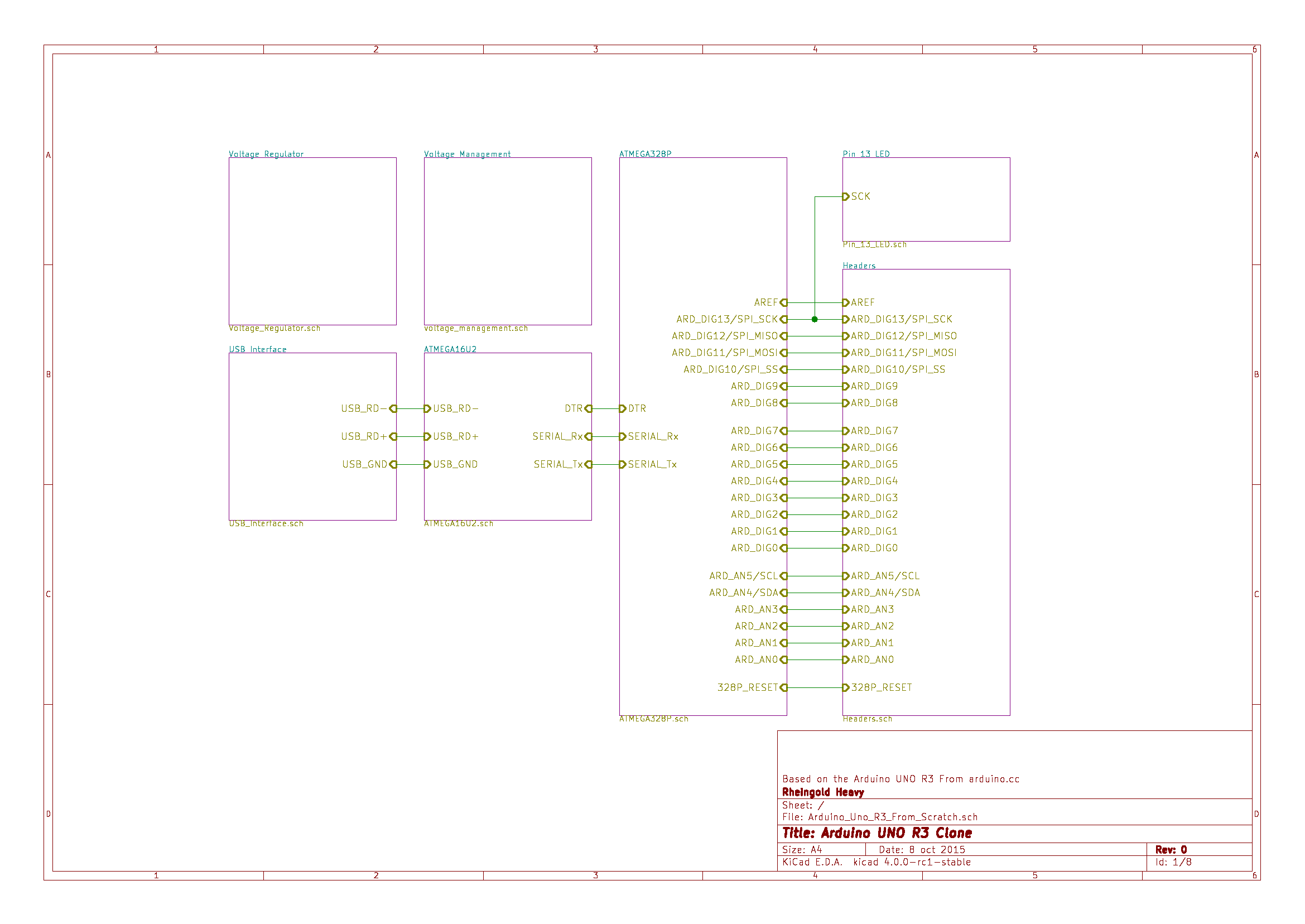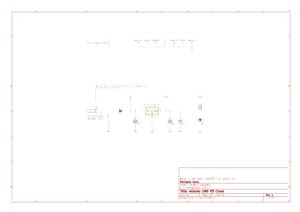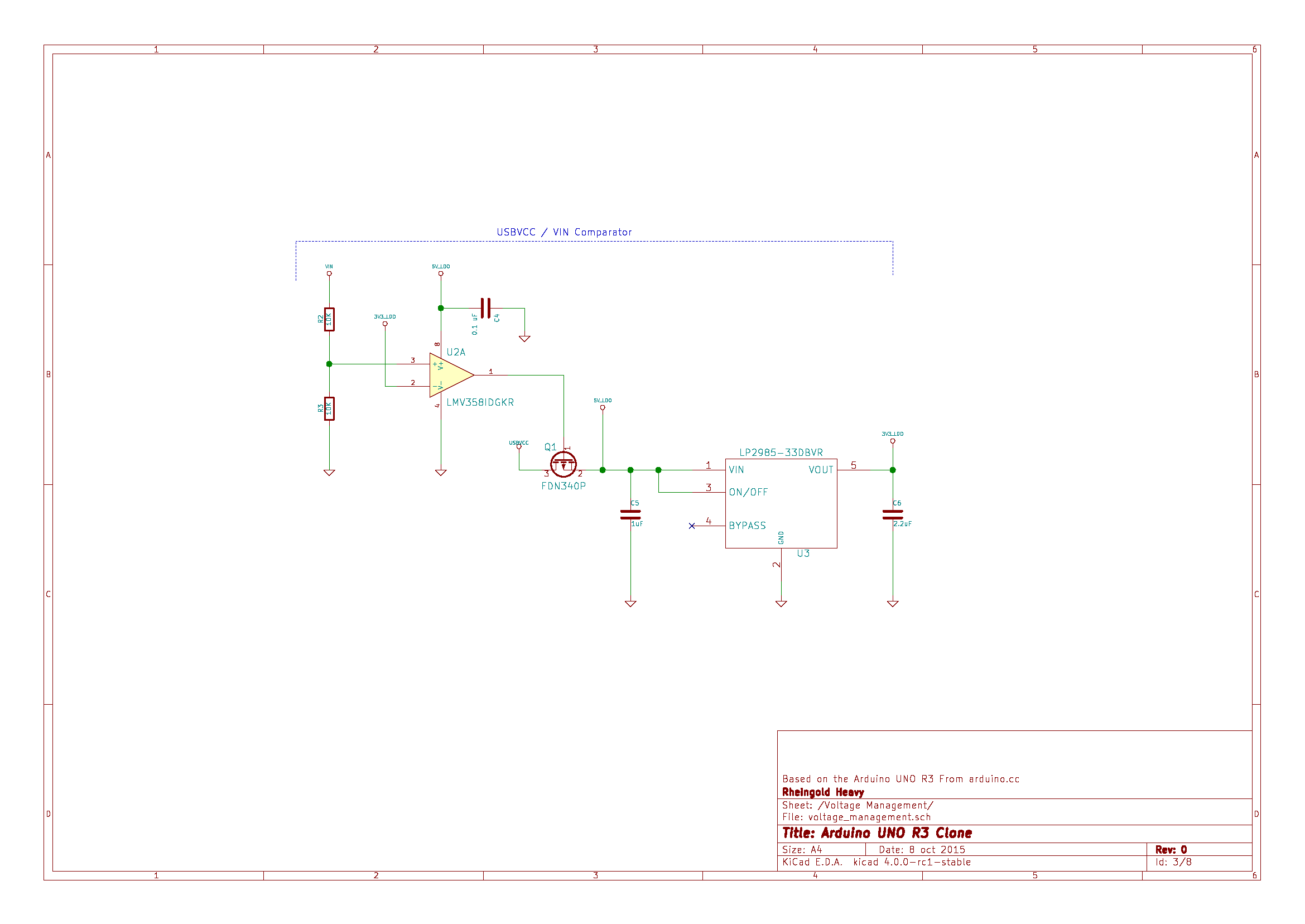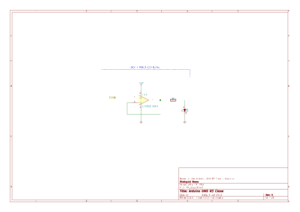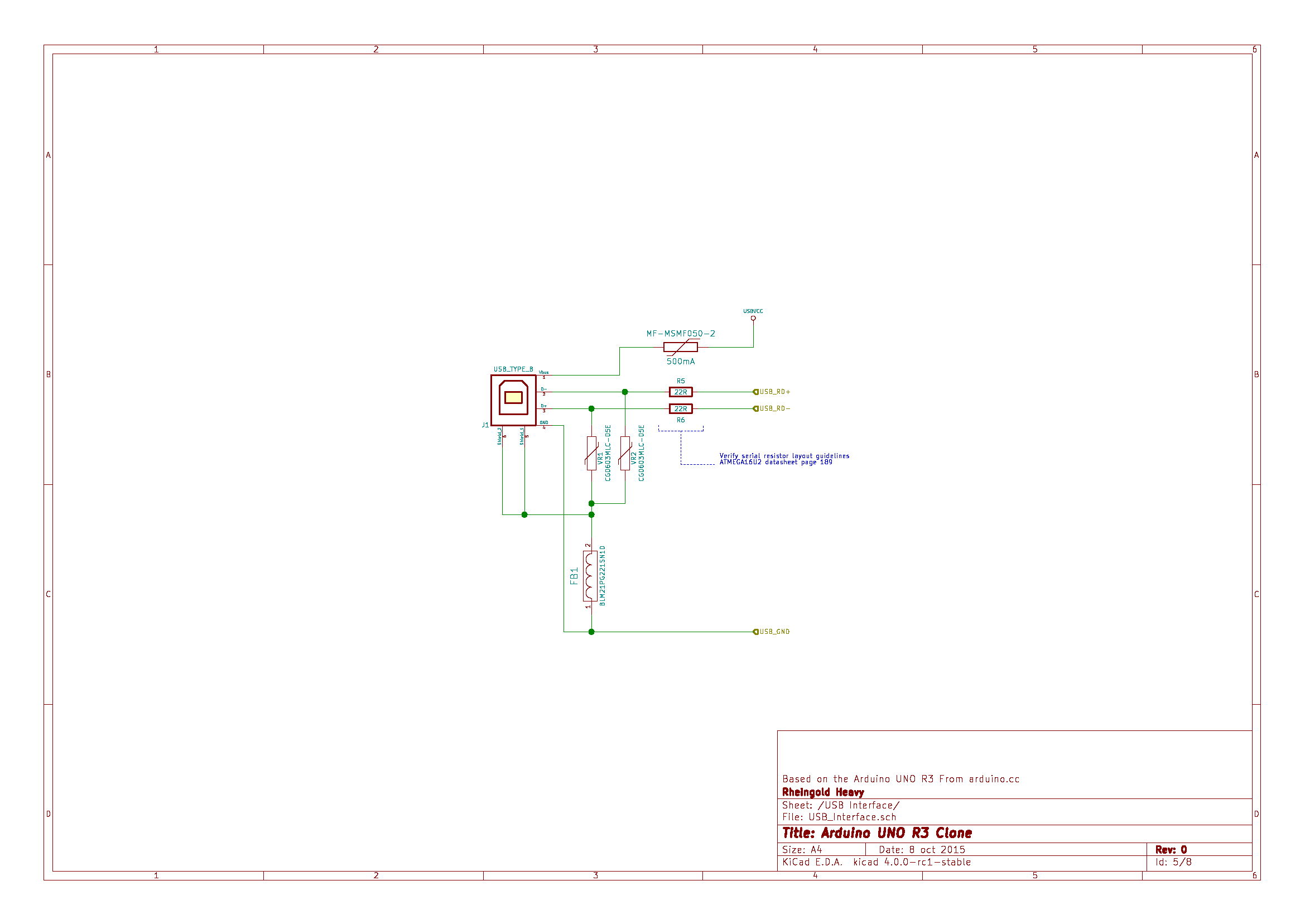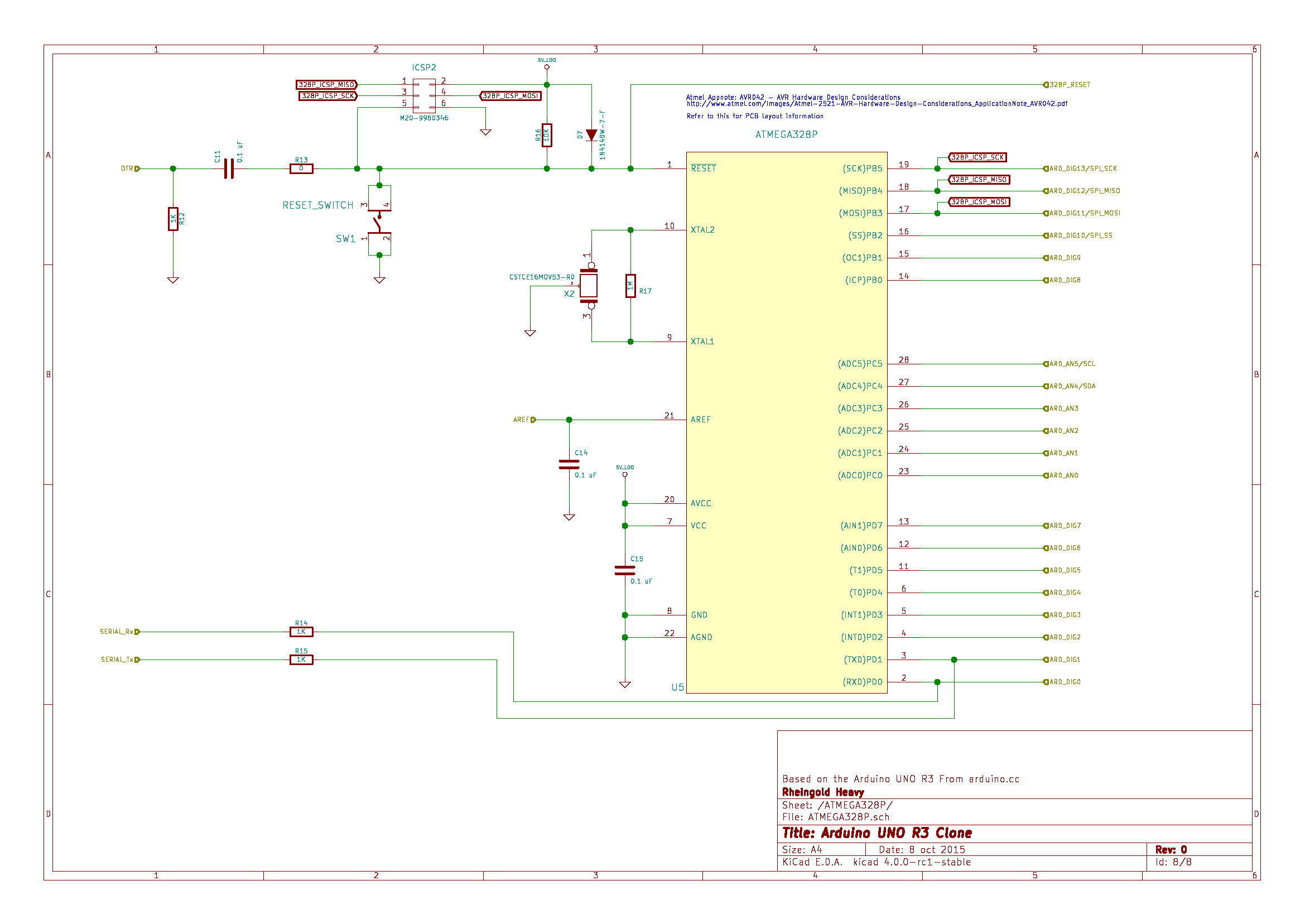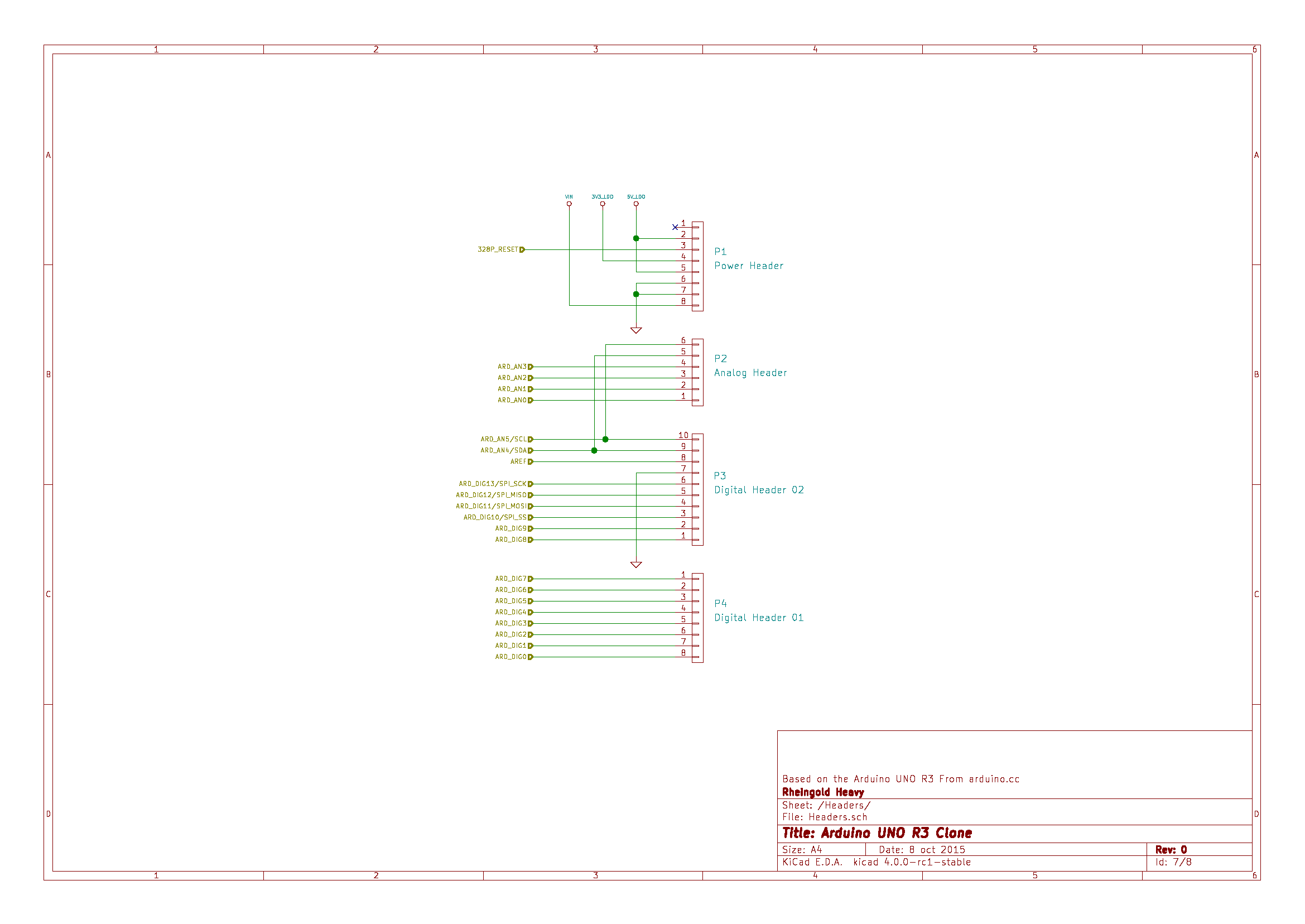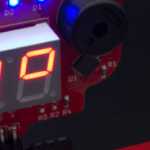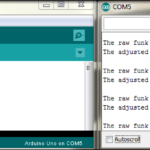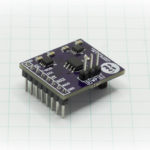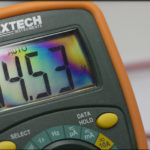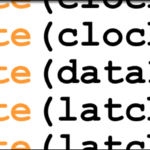We’ve identified each subsystem and noted the type, value and purpose of every single component in the UNO R3 design. Every component has been loaded into a nice, clean schematic (using an opensource EDA tool as well, I might add), and in this post, will now be published to GitHub for anyone to retrieve, along with an accurate and detailed BOM, as of the writing of this post (19-OCT-2015). I truly hope the community finds this a useful resource now and in the future.
Build An Arduino UNO R3 from Scratch Table of Contents
Full Arduino Uno R3 Schematic and BOM
This schematic was developed using KiCad* v4.0.0_RC1, and has now been published to the Rheingold Heavy GitHub repository:
Click here for the files associated with this post at the Rheingold Heavy GitHub repo.
* Update August 6, 2021: The full schematic has been updated to be KiCad v5 compliant as of the latest commit. The BOM was regenerated and is included in the repo.
Moving On…
The Arduino From Scratch series will now continue from a product and manufacturing perspective. With the publishing of the full KiCad schematic and matching BOM, the initial goal, phase one of the project, is now complete.
What is there to do? Well, for general reference, I loaded this BOM file into OctoPart and using Digi-Key, Mouser and Element14 as distributors, the lowest parts cost to build a single Arduino (ie: single quantity pricing) is $28.41. Even going to a batch size of 200 (which would be one of the larger manufacturing runs for Rheingold Heavy), the price only drops to $17.61/board. There are a lot of optimizations that need to be made to get that price down to a reasonable level, as well as any manner of deviations from the ideal schematic necessary to allow the contract manufacturers I work with to be able to produce this.
I also don’t see much point in just creating a complete duplicate clone of the Uno R3. There are a million of them out there already in all manner of different qualities, and all manner of prices. I need to think through what value I can add to the board to make it an interesting alternative to a simple clone.
And then there’s the matter of actually assigning footprints and laying out the PCB… and of course, coming up with a name for it.
This isn’t the end, it’s the end of the beginning.
Final Arduino Uno R3 Subsystem Schematics
For quick reference, here are PNG files of the individual schematic hierarchical sheets.
Master Hierarchy
Voltage Regulation
Voltage Management
Pin 13 LED
USB Connection
ATMEGA16U2
ATMEGA328P
Shield Headers
